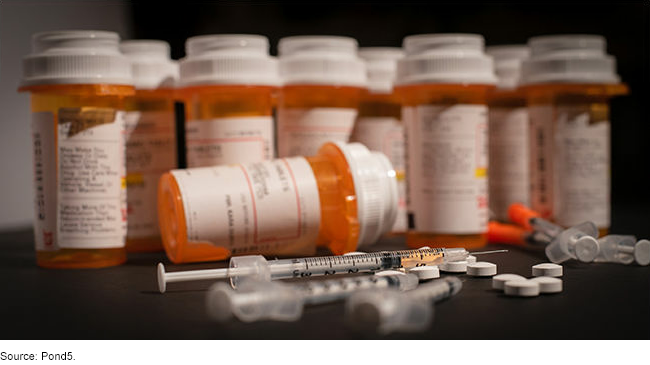Prescription Drugs: Department of Veterans Affairs Paid About Half as Much as Medicare Part D for Selected Drugs in 2017
Fast Facts
Medicare and the Department of Veterans Affairs covered prescription drugs for about 52 million people in 2017.
In our sample of 399 brand-name and generic prescription drugs, the VA paid an average of 54% less per unit than Medicare, even after taking into account rebates and discounts.
The programs pay for drugs differently. Medicare reimburses the Part D plan sponsors to pay pharmacies, but the VA buys drugs directly from manufacturers. The VA may be able to get lower prices because it can:
Negotiate as a single health system with a unified list of covered drugs
Use discounts defined by law that Medicare doesn't have

Highlights
What GAO Found
GAO found that the Department of Veterans Affairs (VA) paid, on average, 54 percent less per unit for a sample of 399 brand-name and generic prescription drugs in 2017 as did Medicare Part D, even after accounting for applicable rebates and price concessions in the Part D program. GAO also found that 233 of the 399 drugs in the sample were at least 50 percent cheaper in VA than in Medicare, and 106 drugs were at least 75 percent cheaper. Only 43 drugs were cheaper in Medicare than in VA. The percent difference in price between the two programs was greater on average for generic drugs. Specifically, VA's prices were 68 percent lower than Medicare prices for the 203 generic drugs (an average difference of $0.19 per unit) and 49 percent lower for the 196 brand-name drugs (an average difference of $4.11 per unit).
Average Per-Unit Net Prices Paid by Department of Veterans Affairs and Medicare Part D for Selected Drugs, 2017

Note: GAO's sample of 399 drugs included the top 100 brand-name and generic drugs in Medicare Part D in 2017, by: (1) highest expenditures; (2) highest utilization (by quantities dispensed); and (3) highest cost-per use. Per-unit prices are weighted to reflect differences in utilization in the two programs. Medicare prices reflect expenditures after accounting for rebates and other price concessions.
While there are many factors that impact prices in the complex drug market, GAO identified several key program features that may contribute to the consistent price differential between VA and Medicare Part D. For example, Medicare's beneficiaries are divided among numerous prescription drug plans, which each negotiate drug prices with manufacturers. In contrast, VA is a single integrated health system with a unified list of covered drugs—thereby possibly strengthening its bargaining position when negotiating. In addition, VA has access to significant discounts defined by law, and can then negotiate further for lower prices. These discount prices are not available to Medicare Part D plans.
GAO provided a draft of this product to HHS and VA for comment. Both agencies provided technical comments, which GAO incorporated as appropriate.
Why GAO Did This Study
In 2017, combined, Medicare Part D and VA accounted for approximately $105 billion in prescription drug sales—nearly one-third of total U.S. expenditures—and covered nearly 52 million individuals. The two programs use different methods to pay for prescription drugs. Medicare reimburses Part D plan sponsors, which in turn pay pharmacies to dispense drugs. VA primarily uses a direct purchase approach to acquire drugs from manufacturers.
GAO was asked to examine differences in the amounts major federal programs paid for prescription drugs. This report: (1) compares average unit prices for prescription drugs in Medicare Part D to those in the VA; and (2) describes factors affecting prices in the two programs.
GAO analyzed (1) CMS data for Medicare Part D payments to retail pharmacies as well as rebates and other price concessions Part D plans received and (2) VA drug purchasing data. These data were from 2017, the most recent data available at the time of GAO's analysis. To select a sample of drugs GAO identified the top 100 brand-name and 100 generic drugs in Medicare Part D in 2017 for three categories: (1) highest expenditure, (2) highest utilization, and (3) highest cost-per use. In total, this yielded 399 non-duplicate drugs (203 generic and 196 brand-name), which represented 44 percent of Medicare Part D spending in 2017. GAO compared weighted average unit prices for these drugs. GAO interviewed CMS and VA officials, and reviewed academic and government reports to understand factors that may affect prices in the two programs.
For more information, contact John Dicken at (202) 512-7114 or dickenj@gao.gov.
